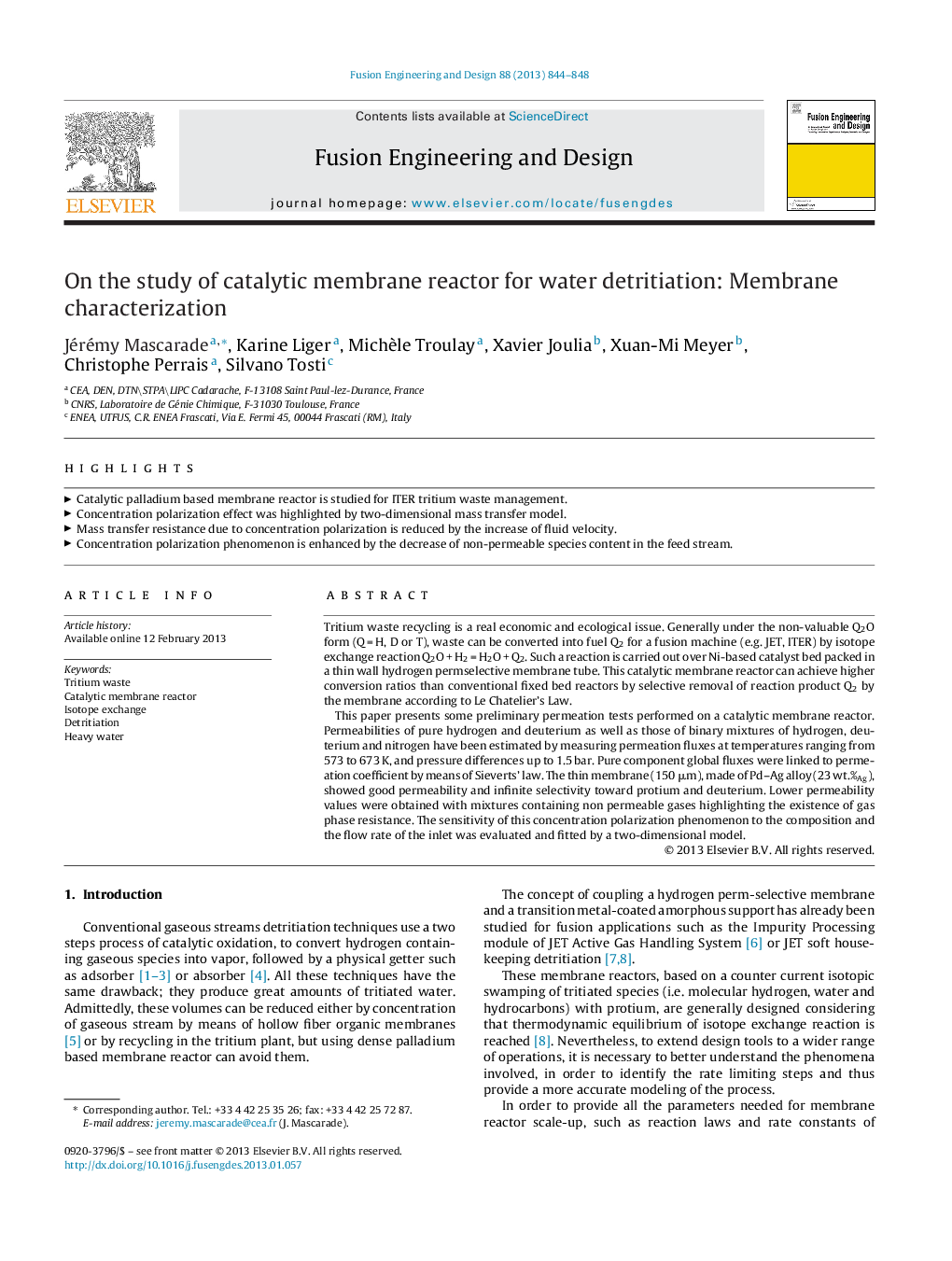| کد مقاله | کد نشریه | سال انتشار | مقاله انگلیسی | نسخه تمام متن |
|---|---|---|---|---|
| 271783 | 505006 | 2013 | 5 صفحه PDF | دانلود رایگان |

Tritium waste recycling is a real economic and ecological issue. Generally under the non-valuable Q2O form (Q = H, D or T), waste can be converted into fuel Q2 for a fusion machine (e.g. JET, ITER) by isotope exchange reaction Q2O + H2 = H2O + Q2. Such a reaction is carried out over Ni-based catalyst bed packed in a thin wall hydrogen permselective membrane tube. This catalytic membrane reactor can achieve higher conversion ratios than conventional fixed bed reactors by selective removal of reaction product Q2 by the membrane according to Le Chatelier's Law.This paper presents some preliminary permeation tests performed on a catalytic membrane reactor. Permeabilities of pure hydrogen and deuterium as well as those of binary mixtures of hydrogen, deuterium and nitrogen have been estimated by measuring permeation fluxes at temperatures ranging from 573 to 673 K, and pressure differences up to 1.5 bar. Pure component global fluxes were linked to permeation coefficient by means of Sieverts’ law. The thin membrane (150 μm), made of Pd–Ag alloy (23 wt.%Ag), showed good permeability and infinite selectivity toward protium and deuterium. Lower permeability values were obtained with mixtures containing non permeable gases highlighting the existence of gas phase resistance. The sensitivity of this concentration polarization phenomenon to the composition and the flow rate of the inlet was evaluated and fitted by a two-dimensional model.
► Catalytic palladium based membrane reactor is studied for ITER tritium waste management.
► Concentration polarization effect was highlighted by two-dimensional mass transfer model.
► Mass transfer resistance due to concentration polarization is reduced by the increase of fluid velocity.
► Concentration polarization phenomenon is enhanced by the decrease of non-permeable species content in the feed stream.
Journal: Fusion Engineering and Design - Volume 88, Issues 6–8, October 2013, Pages 844–848